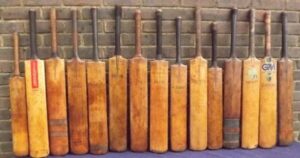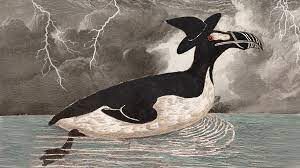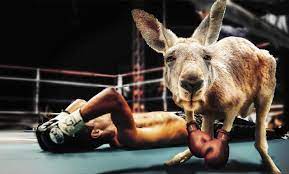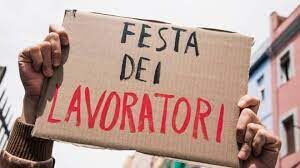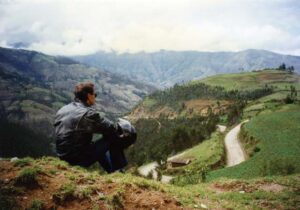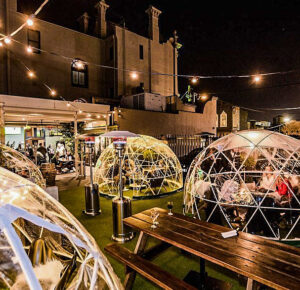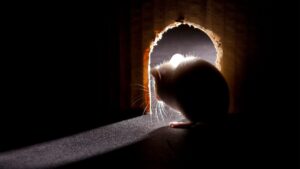The Federal election must be held by May. The Opposition parties should emphasise the need for a national anti-corruption commission, and it has a whole repast of corrupt actions to remind the electorate of what the Morrison Government has been doing. It seems a no-brainer.
Ideally money allocated, and therefore for every grant, should be able to provide evidence how closely “expected” matched “actual” outcome. There are a few outstanding rorters, but there is no need to use such a pejorative term; just detail what Morrison’s government has done in simple terms to tell the story to the electorate – of shameless conduct by this gaggle of mostly unattractive men.
In 1966, the Holt Government achieved a huge electoral win. Seats that had never been held by the Liberal Party fell to them and the most notorious of the elected was a 22-year old travel officer named Andrew Jones. He was a complete idiot and a harbinger of some of the current young members (and would-be members) of the Government. Yet, through his brashness, he actually touched on the truth of the matter, however clumsily. He made the fatal mistake of saying that half the members of Parliament were drunk at any one time and was made to apologise to the Parliament as a whole. His language of the religious jingoistic zealot then would be at peace with some of Morrison’s tribe, if not completely reflecting the happy clapper routine.
His arrival and demise reflected a time when Australia was convulsed by the Vietnam War and selective conscription. The streets were alive with protests and, when coupled with anti-South African sentiment over apartheid, one may have thought the people were consigning the conservative government – which Federally had been in power since 1949 – to electoral defeat.
I can remember watching the election results with a mate called John Douglas and, as the electoral landslide eventuated during the night, we got progressively drunk. As young doctors, we were witnessing electoral carnage. Nevertheless this was an election buoyed by protest from those who ultimately lost.
 My mind turns to the current collection of protestors who are a grab-bag of the authoritarian dispossessed. My thesis is that in a democracy this type of perceived extremist behaviour makes the bulk of the population uneasy. When the Prime Minister seems to be lukewarm in his condemnation, then the uneasiness may well be translated into electoral defeat.
My mind turns to the current collection of protestors who are a grab-bag of the authoritarian dispossessed. My thesis is that in a democracy this type of perceived extremist behaviour makes the bulk of the population uneasy. When the Prime Minister seems to be lukewarm in his condemnation, then the uneasiness may well be translated into electoral defeat.
In countries where the implementation of democracy is fragile and electoral defeat imminent, the government often just simply cancels the election, or puts if off while it destroys the opposition in the manner that this band of extremist would like to occur. The most apposite example was Nazi Germany in recent times, but it is a frequent playbook throughout the World, used on every Continent – even in Australia when Queensland was ruled by Bjelke-Petersen.
The criminality of him and his cronies was revealed by the Fitzgerald Inquiry, and yet there were people in his Government who were considered clean. His successor Mike Ahern certainly was, but corruption is never far away in Queensland.
In Australia and particularly in the above-mentioned State there would be a great number of the politicians who would not be concerned if the inconvenience of democracy was brushed aside. There is always the “unexpected expected” intervention, the obvious one being takeover by the armed forces, which has never occurred in Australia. Notwithstanding, in the thirties with Jack Lang in full flight, it was a close thing. Monash himself was an important figure in preventing such military intervention. However, the threat is always there; unexpected in the timing; expected in its ultimate execution.
The fate of this government is tied to whether most of the population wants people pushing makeshift gallows through the street, when we Australians as a nation have long since abandoned capital punishment. I think threatening to lynch the Premier of Victoria is a criminal offence, and yet there are those on the conservative side of politics who either sit on their hands or condone it.
The world has just survived the most egregious assault in democracy by the action of Trump in his illegitimate claim to have won the 2020 US election. People point to the fact that he garnered 70 million votes. He still lost. The fate of democracy hangs on its survival in America. Churchill’s greatest contribution to democracy was to show that it still worked in Europe; his landslide defeat in 1945 at the polls and his acceptance that, at his finest hour, the people voted “Out”. Two finest hours!
America, despite its impressive beginnings, has always had those who defile democracy, but probably not with the force that Trump exerted in his bid to destroy American democracy. I doubt where Trump would win if he stood again. Nevertheless, after his January 6 antics, he has galvanised his “lumpenproletariat” where, to my way of thinking, his toxic effect is overwhelming.
I wished that my generation had asked their parents which side they would have fought for in the Spanish Civil War – the Roman Catholic Church on one side with The Nazis and the Italian fascists; on the other side the Russians, communists and anarchists – and sandwiched in between, those who wanted Spain to shed its royal family and just become a democracy. The question is simple. I still wonder what my father and mother would have said. But I never asked them; perhaps they would been on the fence, perhaps not.
For me, born in the year Franco was triumphant, Homage to Catalonia has been one of the books which has coloured my political views. Now I read a lesser book, called Guernica, which centres around that cold-blooded massacre. Picasso’s representation of Guernica, which I first saw in the Guggenheim Museum in New York, just demonstrates how little we have travelled, to combat those would extinguish any shred of democracy.
In the end that is the reason that Morrison should be removed – and take the “Duttonbird” with him.
Abiden with the cardinal cuckoos
Marjorie Taylor Greene is unvaccinated, Lindsay Graham doesn’t think kids are entitled to a Kindergarten education, and America’s schools are being indoctrinated by the scary and totally real forces of critical race theory.
So that is one shade of America. Most people here would not know of these Republican cardinal red cuckoos.
I was very critical of Biden, sniping at him for more than a year in the run up to his election. My major beef was about his role in disgracefully discrediting Anita Hall which enabled one the worst Supreme Court judges in my lifetime, Clarence Thomas, to be confirmed. It is a stain that cannot be erased, but the people who remember the stain are fewer and fewer; and remembrance of this will be brushed away.
Biden has achieved a tipping point, and the problem is a substantial minority of Americans are blindly resisting. In his opposition a number of rich men, who have to make a decision – either resist change and the country goes down the Trump toilet. The others may go with the flow.
First Biden turned off the Afghanistan tap for the arms industry. He did it rapidly in accord with the Machiavellian dictum which says that if it is potentially painful and hence unpopular, act decisively and quickly – an acute transitory pain is far better than having a chronic pain over months or years to achieve the same outcome, even if the chronic pain become so dull one can forget the underlying cause of the pain which festers away.
The interstate highway system and all the accompanying infrastructure was the legacy of the Eisenhower administration. Eisenhower improved the road system as an adjunct to American defence. Johnson followed with his Great Society measures. Even then Johnson and then all his successors’ expenditure on infrastructure has been subordinated to expenditure on armaments for little if any results apart from disfigured and disabled countries and generations of chronic disfigured and disabled men and women who served in these conflicts.
The Americans and their Allies were cannon fodder in the destruction of so many countries in search of some mindless goal – or in the case of Iraq, loot in the form of black gold. Useless conflict fomented by a coterie of self-pitying, inhumane and in the long term unsuccessful Americans, their role model being that distinguished conniving ghastly warmonger, Henry Kissinger. He is the person who once said – the illegal we do immediately; the unconstitutional takes a bit longer.
In other words, infrastructural regeneration has been subordinated to visions of Imperial America.
Biden has seemingly learnt from these foibles and may now be doing what he or his predecessors should have done years ago. Few people get the number of chances he has had. The most engaging quality he has displayed is a steely resolve to get on with his agenda, and not disappear down a trail of rhetorical flourish as Obama did when faced with a similar challenge.
We’ll watch with interest this infrastructure program which has the ability to reinvigorate America and drive out the dark side of Mr Hayek as interpreted particularly by Donald Trump.
The Louisville Slugger
Frankfort is one of the lesser-known places to visit in Kentucky. It is where the capital is, a straightlaced township of tidy wide streets surrounding the traditional wedding cake Capitol with a white cupola on top.
We drive around the quiet streets, because it’s a Saturday afternoon on the road to Louisville, the largest city in Kentucky which sprawls across the Ohio River into Indiana. We had friends living there at the time. Sally was working at Churchill Downs where, on the composite sand, fibre and rubber racetrack once a year the hooves of the best three year old thoroughbreds imprint themselves for one and a quarter miles in a bid to win the Kentucky Derby.
We were not there during the May bedlam which surrounds the Derby. We just had a quiet look around the course and then toured into the countryside – blue grass covered lush gently undulating studs. Kentucky is the “Blue Grass State. “Blue grass music” is a staple diet, but there is always the sentimentality of Stephen Foster’s “My Old Kentucky Home”. The blue grass is so green it almost has a blue tinge; it may look good in a Kentucky meadow but it is shallow rooted and thus does not survive heat well.
Blue grass music is linked to Kentucky as it emerged from the Appalachian people. Hillbillies they are called and live in this range of mountains, which carves its way through West Virginia, Kentucky, Tennessee and the Carolinas. The alternate tinkling and then frenzy of the banjo, the fiddle, the bass and the guitar are nevertheless a long way from Louisville.

Louisville gave its name to the Louisville Lip – Muhammed Ali, but also to the Louisville Slugger. We were not given an effigy of yon fighter, but we were given two miniature Louisville Sluggers – the time-honoured baseball bat made from ash.
Nevertheless, the most memorable highlight for the ubriaco was being introduced to Maker’s Mark. It was well before it became a favourite brand of bourbon whiskey here in Australia, and my friends used to buy it, not by the bottle but by the jug, and were very liberal in the hospitality. Bourbon whiskey is only made in Kentucky, and Jack Daniels, for instance, calls itself sour mash because it is made in Tennessee.
We all went to the Makers Mark distillery in Loreto, about an hour’s drive from Louisville. Bourbon is corn derived I was so impressed that I decided to buy a bottle before we crossed the State line but learnt another fact about the bourbon and mint julep state. Some of the counties are dry, and I would have to try and buy a bottle in a dry county. So, empty-handed, I learnt another lesson in the tragedy of life as I left the shop. Never judge a Bourbon by its county.
Pre-COVID-19 Estonia – a Flag of Blue, Black and White
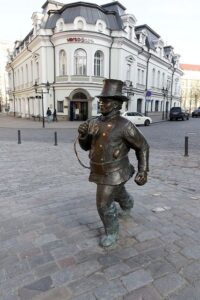
We arrived by ferry from Helsinki and booked into the Savoy Hotel. Yesterday the hotel was the centre of attention when the Baltic “sweepdom” had gathered in front of the Hotel. Apparently, the happy stout little chimney sweep statue out the front of the hotel draws the Estonian chimney sweeps annually to rub his buttons and nose. These have been so polished they stand out on this metal statue.
This Savoy Hotel is a Tallinn landmark and classifies itself as “boutique” but to the naked eye it looks more “Le Magasin” to me. It is that large.
Today although it is June, in Tallinn as in the rest of Estonia the weather is very cold. The wind chill factor has driven the temperature close to freezing. Despite this we make a short walk up the city hill. There are many streets leading from the square where our hotel is located. They are all quaint and bitterly cold. The cross streets give a terrace effect and the market stalls on the flat terrace provide only limited shelter against the cold. We soon abandon this foray.
Initially I had suggested that my companion find the oldest pharmacy in Europe a little further up the hill. I had been there some years before and for somebody interested in the evolution of therapeutic drugs, it was worth seeing. My vague gestures and the wind whipping at the map, so it is hard to hold flat let alone read, makes her abandon the search after 20 fruitless minutes. I have been frozen sitting on the granite wall. It is not really a voyage of discovery. We retreated to the warmth of the hotel bar.
The food has become more varied from the pig and potato fare that I remembered my last time in Estonia. This has been replaced by the dainty MEKK –Moodne Eesti Köögikunst cuisine at the Savoy. The salad is all miniature leaves interspersed with edible flowers – chew on a violet or viola or pansy – but the seafood, whether it be pike or perch or herring or salmon or other packed into a terrine, is very palatable and there is copious rye bread.
In the bar to drink she has a brandy and dry and I have a martini – vodka rather than gin. After all we are in Estonia. The Savoy bar is very long and we are perched on the end where the faux-granite resembles the prow of a boat. We settle in to wait the cold snap out. It does not improve, and the flowers in their boxes outside shiver.
The next day the weather does improve marginally – the sunlight struggling to prove that June has arrived. We pay a visit to Saint Nicholas Church Museum. Tallinn was carpet bombed by the Russians in May 1944, and the church – a beautiful reminder of mediaeval Hanseatic wealth – was destroyed in that raid. It has taken 30 years for it to be rebuilt into a semblance of its former self.
A tourist site can be so crowded that it becomes a forest of people concealing what you want to see – and I hate being moved on. It is understandable. You can’t stand in front a piece of art the whole day, pondering if it is limiting the number of people passing through, who may want to ape your stance. The other problem of course is that, as with airports, art galleries are long distance events, especially if the exhibits overwhelm that ability for the mind to process and after a time the mind gives up and they end up in a blur.
Now in this museum, the cabinet high altar which was constructed in the fifteenth century is a splendid masterpiece by Herman Rode. It opens up to display the panels of brightly painted figures. He was a painter of that distinctive late mediaeval representation of the human form. The background depicts his native Lubeck in Northern Germany. The altar is a complexity as it opens in two stages; the first the painted narrative, the second a wooden hagiography where multiple wooden figures peer expressionless from their cell. One of the figures, St Barbara, the patron saint of the dying, is depicted holding what appears to be the mediaeval equivalent of an intercontinental missile. It is actually a tower, but it has an uncanny resemblance to a missile. As well as the patron saint of the dying, she is also coincidentally the patron saint of explosive manufacturers. True!
Herman Rode was a contemporary with Bernt Notke, the painter whose version of the Danse Macabre hangs in a dark alcove of this museum. The photographs of this painting are always taken in a blaze of arc lights. In the natural gloom we need to be close to the canvas in order to identify the conga line of people and skeletons, with the skeleton wearing a turban up front playing what may have been a torupill – the Estonian bagpipe. It is confronting, because of the representation of the pope, the emperor, the fashion plate lady, the merchant prince all connected via grimacing skeletons and in between there is the cardinal in his wide brimmed scarlet hat, depicted as if he had been interrupted on his way to lunch. The painting fragment ends with a capering skeleton. Bit spooky, she said and in the shadows of the building the tableau seems to invite us to join the conga line. We escape through a narrow corridor lined with mops, buckets and bottles of cleaners through an open doorway, that is conveniently close to the exit. All the massive doors of the museum are firmly locked. Ours is the unconventional exit.
Out into the sunlight and gradually the weather has improved so that next day we are able to have lunch out in the open at the Olde Hansa restaurant. The waitresses are all attired in Brueghelesque brown working clothes – brown belted dresses and white or coloured linen bonnets. Sitting on the solid wooden benches one associates with wenches as we chew on the dried elk, I had flashbacks of the country’s Hanseatic past.
Like the Welsh, the Estonians are great singers, and they have a penchant for folk dances. Brooms are used as props, which may be hardly “PC”, but there is a simple refreshing optimism among the Estonians which you cannot help embracing. In our own country we tend to avoid these faux-mediaeval places, which dot the landscape as a means of indulging in nostalgia for a mythical past. In Tallinn Old Town the indulgence seems to be less fanciful – just a glance back to the past, if a more congenial one.

Estonia lives with Russia in an uneasy relationship. It is rare for this country ever to be functional as an independent State, and yet in the East there is an Estonian gravel road between two villages which crosses the border into a Russian territory protrusion called the Saatse Boot. This anomaly survives the separation of Estonia from Russia in 1991, and while theoretically this sliver of land should have been handed over in 2005, nothing has happened despite the agreement to do so being signed years ago.
Thankfully we could enter Latvia without having to go through Russia. There was a diversion to the seaside town of Parnu for lunch at MUM, a restaurant where she had duck and I had the Estonian version of schnitzel. Baltic Sea beaches are impressive. The beach at Parnu is no exception. It is long, pristine yet this day absolutely frigid, few people were wandering along it because early June was not yet summer. It was still “icumin-in”.
The Economist Produces an A-Serbic Volley Below
For more than 15 years, the “big three” of men’s tennis—Roger Federer, Rafael Nadal and Novak Djokovic—have had a stranglehold of the game. They have won 60 of the past 73 grand-slams, the sport’s most important tournaments, winning 20 each. All three have enjoyed periods as the undisputed champion. But in recent years, as injuries and age have ravaged Messrs Nadal and Federer, Mr Djokovic has surged ahead. In 2021, he was imperious, winning the first three grand-slams and securing the year-end number one ranking for a record seventh time. But while other elite players must find the dominance of the big three daunting, recent results offer them hope.
In September Daniil Medvedev won his first major tournament by beating Mr Djokovic in the final of the US Open, denying the Serb a historic “calendar grand-slam” (winning all four slams in a year). Then on November 20th Alexander Zverev beat Mr Djokovic in the semi-finals of the ATP Finals, the prestigious season-ending finale (and went on to defeat Mr Medvedev in the final one day later). Are these victories a harbinger of better times for them and others on the tour?
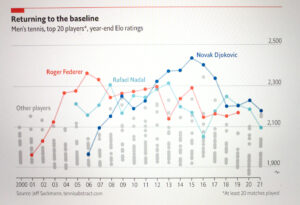
According to Elo, system which rates players by their performance and the quality of opponents they face, Mr Djokovic’s rating at the end of 2021 was 2,178 points, his lowest in a decade and just 19 points higher than the second-ranked Mr Medvedev. Last year the gap between the pair was 128 points.
These three players have been so dominant but now, with injuries and age, Federer and Nadal are close to retirement, and no longer in the elite. However, one never knows on the clay surface of Raymond Garros with Nadal.
The problem is Djokovic and his infuriatingly ambivalent view on COVID-19 vaccination. I have no knowledge of whether he has ever been inoculated, (there was a suggestion that he caught the disease whilst in Serbia at a tournament he organised) given that in parts of Eastern Europe, many of the diseases which mass vaccination programs have almost wiped out in Western society, persist. For instance, has Djokovic had a rabies shot – an exotic disease to us but not in Eastern Europe?
However, this background is superfluous because his truculence fuels the anti-vaxxers, and while he may be one of the biggest drawcards because of the number of tournaments he has won rather than his social graces, then the money people behind world tennis are liable to genuflect. However, as he slips in his rankings this current pandering in the name of box office receipts will fade. He probably is an over-rated commodity anyway.
I would hope that the short-term gain in World-Tennis being infected by the “brat-pack” with the McEnroe and Connors of the world has been abandoned. Djokovic is more than a brat, because the others did not potentially challenge the health status of our Nation.
Mouse Whisper
Laconic me this week. Just one question.
If output is directly related to input, does that mean that income is directly related to outcome?





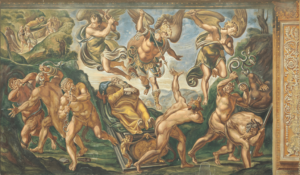





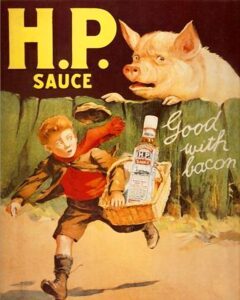


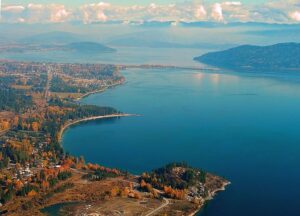

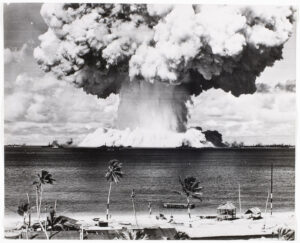


 At the time we visited, very little English was spoken, but we got by. However, French Polynesia is spread over a large area of the Pacific Ocean, and therefore strategically it remans important; but even more so now at a time where there are social disturbances whether due to climate change or from disease. Even given French aloofness, it is important not to gratuitously insult the French.
At the time we visited, very little English was spoken, but we got by. However, French Polynesia is spread over a large area of the Pacific Ocean, and therefore strategically it remans important; but even more so now at a time where there are social disturbances whether due to climate change or from disease. Even given French aloofness, it is important not to gratuitously insult the French.